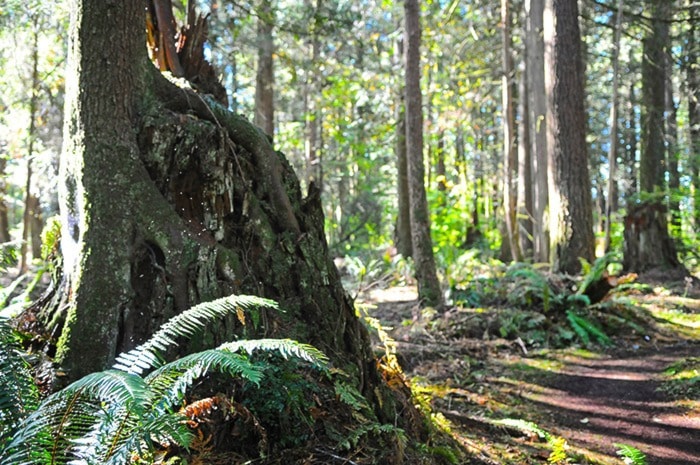Dr. David Clements admits he was a little skeptical when Trinity Western University first began research in Glen Valley’s Blaauw Eco Forest three years ago.
“Myself, I didn’t anticipate it would be this exciting to work in that forest,” said Clements, who is a professor of biology and environmental studies at TWU.
“I had seen the forest and walked through, but once the students really started to investigate these things, it’s been quite a ride.”
The forest, once a controversial block of Township-owned property that many neighbours feared would be developed, was named after the Blaauw family, who purchased the land and donated it to TWU for environmental research, education, preservation and recreation in 2013.
Since that purchase was made, TWU faculty and students have found more than 336 species in the forest, including: 63 birds, 15 mammals, three reptiles, eight amphibians, one fish, 45 invertebrates, six grasses, 70 herbs, 29 shrubs, nine trees, 42 mosses, 12 liverworts, five lichens, six slime molds and 22 fungi.
They’ve even discovered two Blue Listed species — the Northern red-legged frog and the Pacific sideband snail — and a centuries old bog.
“All along the Fraser River there’s bogs like this, and most of the others have been studied somewhat because they’re much bigger,” Clements said.
“This is a remnant of what used to be a bigger bog, and the thing is, we knew there was a wetland there, but before the students really dug in and started studying things, we didn’t know it was Sphagnum moss, which (is) the mark of a true bog.”
Clements says although the bog is not as large as the better known Langley bog in Derby Reach, it is deeper, meaning it could be much older. Early estimates suggest it could date back as far as the 1200s.
Being able to discover new things, and even name new areas — such as the bog, which was named the Guirhoorn Bog by the two students who found it — is one of the most exciting aspects for the students, Clements said.
“For those students who have worked there, it’s been transformational in their lives as far as the work experience and getting out there,” Clements said.
“No very detailed study has been done before and they got to be pioneers, so I think that was a lot of the excitement.
“We’ve done three years, but I think there’s so many more areas where a students can still start and be the first ones to discover things.”
